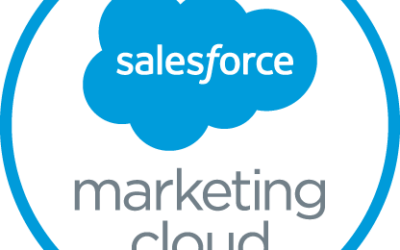Have you ever wondered why some companies excel at marketing while others struggle? Imagine spending hours crafting the perfect email campaign, only to send it to the wrong audience due to a mismanaged business unit structure. This common mistake underscores a critical decision for many organisations: should you use a single BU or multiple BUs?
Many businesses grapple with this choice, as each approach offers unique benefits and challenges. Choosing the right BU structure can significantly impact your marketing efficiency, brand consistency, and overall success. In this post, we’ll dive into the advantages and disadvantages of both single and multiple BUs, considering factors such as brand management, technical requirements, and cross-sell opportunities.
By the end of this post, you’ll have the insights needed to make an informed decision on the best BU structure for your organisation, ensuring your marketing operations are both effective and efficient.

Pros and Cons of Multiple Business Units (BUs)
Implementing multiple BUs in SFMC offers several advantages and challenges:
Pros:
- Less Change Management:
- Teams can continue working in familiar ways, reducing the need for extensive retraining. This means smoother transitions and less disruption to ongoing campaigns.
- Brand Separation:
- Clearer separation of brands minimises the risk of cross-brand targeting and incorrectly branded emails. Each brand can maintain its unique identity and customer experience without interference.
- Risk Mitigation:
- Ensures that marketing communications are accurately targeted and branded, reducing the likelihood of errors that could damage brand reputation.
Cons:
- Technical Reliance:
- Segment building relies heavily on Snowflake and technical resources, which can be a bottleneck if technical expertise is limited.
- Infrequent Data Refreshes:
- Data imports from Snowflake are recommended up to 24 hours, which may not meet real-time needs. This can lead to outdated information being used in campaigns.
- Duplication of Work:
- Changes to the data model must be replicated across all BUs, leading to inefficiencies and increased workload for technical teams.
- Difficult Asset Sharing:
- Sharing assets across brands can be challenging, resulting in duplicated efforts and potentially inconsistent brand messaging.

Pros and Cons of a Single Business Unit (BU)
A single BU in SFMC presents a different set of advantages and challenges:
Pros:
- Unified Data Model:
- A single data model across all brands simplifies onboarding and promotes consistent ways of working, making it easier for new team members to get up to speed.
- Ease of Asset Sharing:
- Facilitates sharing of assets, reducing duplication of work and ensuring consistent branding across all communications.
- Enhanced Data Management:
- Self-service segment building and frequent data refreshes (up to hourly) are possible with Data Cloud, providing more timely and accurate data for campaigns.
- Cross-Sell Opportunities:
- Easier cross-sell and upsell opportunities with data available in the same environment, allowing for more integrated and comprehensive marketing strategies.
- Consistent Working Environment:
- Provides a standardised working environment for all teams, promoting collaboration and efficiency.
Cons:
- Change Management:
- Requires significant changes in how teams work, including branding email templates correctly and segmenting audiences accurately. This can be a challenging adjustment period for teams.
- Risk of Miscommunication:
- Increased risk of sending communications to incorrect audiences if user access is not properly managed, which can be mitigated through robust approval processes.
- Access Control Challenges:
- Difficult to limit user access to specific assets, leading to potential security and management issues. Approval processes can help but require additional oversight.
Examples of multiple business unit structures
- Split by operational teams – as marketing cloud can be used for all comms including transactional, internal, as well as marketing, business units can be split to align to these operational purposes
- Split by brands – for multi brand businesses, splitting by brands is also an option which allows to keep assets and audiences separated
- Split by country/regions – splitting business units by country or region such as ; EMEA, APAC, Americas
- Split by lines of business – splitting business units by different lines of business such as ; online store, retail stores, memberships

Deciding the Best BU Structure for Maximum Impact
In this post, we explored the benefits and drawbacks of using single and multiple business units (BUs) in Salesforce Marketing Cloud. We discussed how multiple BUs can streamline brand management and reduce the risk of cross-brand targeting, while a single BU can simplify asset sharing and enhance cross-sell opportunities. Ultimately, the choice between single and multiple BUs depends on your organisation’s specific needs and goals. It’s essential to weigh the pros and cons carefully to determine the best approach for your marketing strategy.
What’s your take on BU structuring? Share your experiences and insights in the comments below! If you have specific questions or need personalised advice, don’t hesitate to contact us for a consultation.
For more tips on optimising your marketing strategy, check out our related posts on effective data management and cross-channel marketing. Remember, the right BU structure can be the difference between marketing success and missed opportunities. Make your choice wisely.


